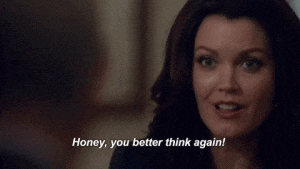- Bartsch, Robert A., et al. “Gender Representation in Television Commercials: Updating an Update.”Sex Roles, vol. 43, no. 9, 2000, pp. 735. ProQuest, http://prx.library.gatech.edu/login?url=https://search.proquest.com/docview/1308100073?accountid=11107.
This peer reviewed article is about the method used and the results obtained when replicating O’Donnell and O’Donnell (1978) and Laval’s (1989) study in the unequal gender representation in T.V commercials. Firstly, it’s important to consider that no study can be repeated in the exact circumstances, which is why, instead of coding three major television networks (like O’Donnell and O’Donnell (1978) and Laval’s study), this new study coded four major networks (ABC, CBS, FOX and NBC); coding 757 commercials of a 32-hour television. Its main purpose was to see the percentage change of women and men’s roles as voice-overs, and domestic (foods, cleansing supplies, cosmetics, etc.) and non-domestic (cars, trucks, or any out-of-home items) product representatives. With all the coded information, a chi-square test showed that although there had been a positive change in the percentages of male and female product representatives, there was still a great gap in the fact that 64% of domestic product representatives were female, and 89% of non-domestic product representatives were male. As a conclusion it was stated that unequal gender representation is still present in tv commercials, as females are overrepresented in domestic products and male in non-domestic products, indicating that gender bias continues to occur in tv commercials as well as other forms of mass media.
Overall, this article is worth reading as it emphasizes on the fact that analyzing trends in gender representation is an important measurement that determines how society views women and men. Additionally, it clarifies that methods used for this study need to be improved (to gather more information and improve this inequality) as variants like commercials having multiple (or none) characters at all is making coding more difficult.
- Cochran, Barbara. “WOMEN’S ROLE IN MEDIA: BUILDING TOWARD AN EQUITABLE FUTURE.”Medijske Studije = Media Studies, vol. 2, no. 3, 2011, pp. 94-99. ProQuest, http://prx.library.gatech.edu/login?url=https://search.proquest.com/docview/1954227223?accountid=11107.
This peer reviewed article is based on the research made by IWMF (International Women’s Media Foundation) regarding the current status of women in journalism, radio, and general newsrooms; the barriers that are inhibiting their advancement; and the possible solutions and outcomes that could be generated from this inequality situation. In first instance, although vast changes have been going on for women in the newsrooms (seen when a woman was promoted to executor editor of the NY times, and when another one anchored one of the three American network evening casts), there’s still lots of inequality to change. IWMF (created to strengthen the role of women in the media) researched that some regions such as Nordic Europe (the nations of Scandinavia) and Eastern Europe have managed to give women (69.4% of them) the opportunity to hold high percentage of support jobs, such as sales, finance and human resources, however, this isn’t the case of the rest of the countries, as it was concluded that “the difficulty of getting in the door”, “the glass ceiling”, and “parity” were the three principal barriers of women’s advancement in media.
Overall it is worth reading this article as it doesn’t only expose statistical facts of the real life situation regarding women’s role in media, but it also proposes that solutions like the adoption of equitable gender policies at organizations, the prohibition of sexual harassment, and the declaration of working for gender equality, would create a diversity of content in the newsrooms that will expand and enhance the audience by targeting community minorities and giving more accurate reflections about the situation exposed in the media.
- “Research on Sex-Roles in the Mass Media: Toward A Critical Approach.”The Insurgent Sociologist, vol. 7, no. 3, 1977, pp. 19-24. ProQuest, http://prx.library.gatech.edu/login?url=https://search.proquest.com/docview/1308072551?accountid=11107.
Part 1 (pages 19 – 24) of this peer reviewed article is about the study of Liberal Feminism in mass media (purposed to integrate women into the system of mass media on equal basis with men). It starts stating a general conclusion: males dominate mass media content, both quantitively and qualitatively, and, contrary to females who represent sexuality and domesticity, they are the living image of employment, politics, science, history, and family. The study highlights that the women’s oppression is due to the existence of male supremacist ideology, and that all women should come together as a unique sex to overcome men’s supremacy. The article argues that this inequality (represented in mass media) is because “men who own and operate mass media in society, are seen as perpetuating their own domination over women by transmitting sexist content”, reason why women appear “stereotypically” as housewives and sex objects. Out of all this information, questions like: How frequent do female characters appear in mass media(mm)? To what extend is marital and parental status connected to women in mm? What are the occupations of women in mm? What type of behavior do women exhibit in mm? arise. The study of the article answers the interrogations with the following data: Male outnumbered female characters in soap opera, prime-time, and children’s television; more than half of female characters were married compared to only one third of the male characters; 60% of men in tv were doctors, lawyers or businessmen, while 60% of women in tv were nurses, secretaries, or housewives; women appeared to be silly, weak, dependent, and incompetent, in comparison no man who were shown as independent, knowledgeable and competitive; among many other. With this information, the research finished implying that media content might be less sexist if women: had the same occupational distribution than men, were shown advertising the same male products, and had an equal degree of parental and marital status.
Overall, this article is worth reading as it doesn’t only exhibit the in-depth research of women’s oppression in mass media gathered though the study of Liberal Feminism, but it also helps overcoming this regretful barrier. We can see this improvement in the last few years where the number of female characters in prime-time television has increased, more television drama and comedy programs touch the subject of women’s role in society, and there’s an increasement in magazines and tv programs that show realistic images of women in society.
- Scott, Amanda M. I. The Roles of Women in Television Situation Comedies: A Pilot Study, Gonzaga University, Ann Arbor, 2011. ProQuest, http://prx.library.gatech.edu/login?url=https://search.proquest.com/docview/912370536?accountid=11107.
This article argues two generalizations that are present in our daily life: Women and male relationships, and the need to communicate with each other. Based on this is statement it is clear to see that television doesn’t only portray the communication struggles between men and women, but it also exhibits a non-reliable image of traditional gender roles and patriarchy (also analyzed Luzen, Dozier & Horan’s study). Through a study made of 25 sitcom episodes of shows aired between 2000 and 2011, some conclusions, like the following once, were made:
- Female characters were constantly involved in family and romance roles, while male characters were portrayed in ambitious and successful roles.
- In the episodes studied, men were shown 311 times while women only appeared 252 times.
- Female character was still a television cliché, as women had to represent acts of cleaning, cooling, and keeping the family unite.
In general, the study allowed the author to get to the conclusion that there is, undeniably, a perpetuation of traditional gender roles in sitcom tv shows that isn’t portraying the actual role of women in society, as, day by day, females are obtaining more jobs, succeeding, and making a greater impact in the world. Despite this conclusion, several improvements should be made to the study in order to improve its reliability. For instance, the category and number of episodes chosen should be broader, as the type of show (comedy, action, romance) or the specific episode selected, can change completely the perspective of the person who’s watching.
Overall, it is worth reading this article as, just like it says at the end of it, we should not believe everything we see on tv. The study was a great reflection of the fact that women are wrongly presented in society and that sitcom shows are making us perceive in an erroneous way the impact and role that women have in our contemporary community.
- Riley, Maria. “WOMEN: Female Roles Still Distort Reality.” org, Center For Media Literacy, 0AD, www.medialit.org/reading-room/women-female-roles-still-distort-reality.
This online article focuses on the way the power that media has of controlling women’s lives is changing year by year. Ever since the early 1960’s, feminist movements have been consistent, as women’s ideas and unique identities were controlled by men as they owned all forms of communication. An example of this could be easily seen in newspapers, because as long as they belonged to men, every article and publication would reflect men’s ideologies. In the past, women used to appear in stereotypical roles like a “dumb blonde”, a sex object, a “whimpering victim”, or a “homemaker”. However, thanks to the persistency of trying to change women’s media projection, there are new images appearing. Currently, there are more women characters in TV, more job diversity, and new structures of family.
Overall, it is worth reading this article because it doesn’t only give hope of change to every individual who fights for gender equality in media mass, but it also highlights that there is still lots of changes to be made, as shows that only hire all-white female protagonists or that portray the wrong image that women shouldn’t be single mothers, should be completely vanished.
- Ali, Lorraine. “Scandal, Sexism and the Role of Women at Fox News.” Los Angeles Times, Los Angeles Times, 6 Apr. 2017, 3:55pm, www.latimes.com/entertainment/tv/la-et-st-bill-oreilly-sexual-harrassment-fox-news-women-20170405-story.html.
This report exposes a sexual accusation made towards Bill O’Reilly and 21st Century Fox, as they were called out for paying out 13 million dollars to 5 women who were going to publicly state an allegation that they had been sexually harassed. Although it was stated that these accusations weren’t true, many support groups appeared to help, which is why the story became viral through high profile advertisers and the National Organization for Women. With this news, more and more female workers started to make public their own stories, making statements like the fact that they were working in a place that “sounded more like the early grope-happy days of “Mad Men’s” Sterling Cooper than a modern media institution” (seen for example in the fact that women in Fox were forced to dress in high heels, skirts, and wear lots of make-up).
The reason why I find it important to read this report is because is really interesting to analyze the way in which a public institution (such as Fox news) who constantly speaks about feminist news and fights for women rights, is actually extremely hypocrite, as they give one face to the public and do another one behind cameras. Additionally, it’s nice to see the way in which other tv reports, magazines, and advertising companies used their organizations to exhibit and call out a regretful situation.

When someone decides to mess with a women…

Comments are closed.